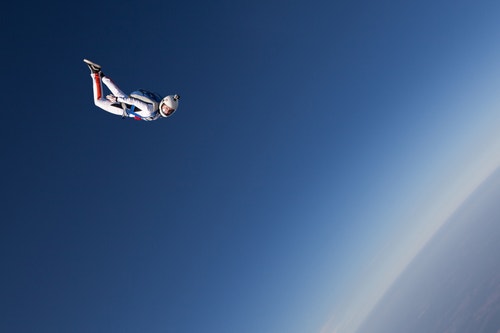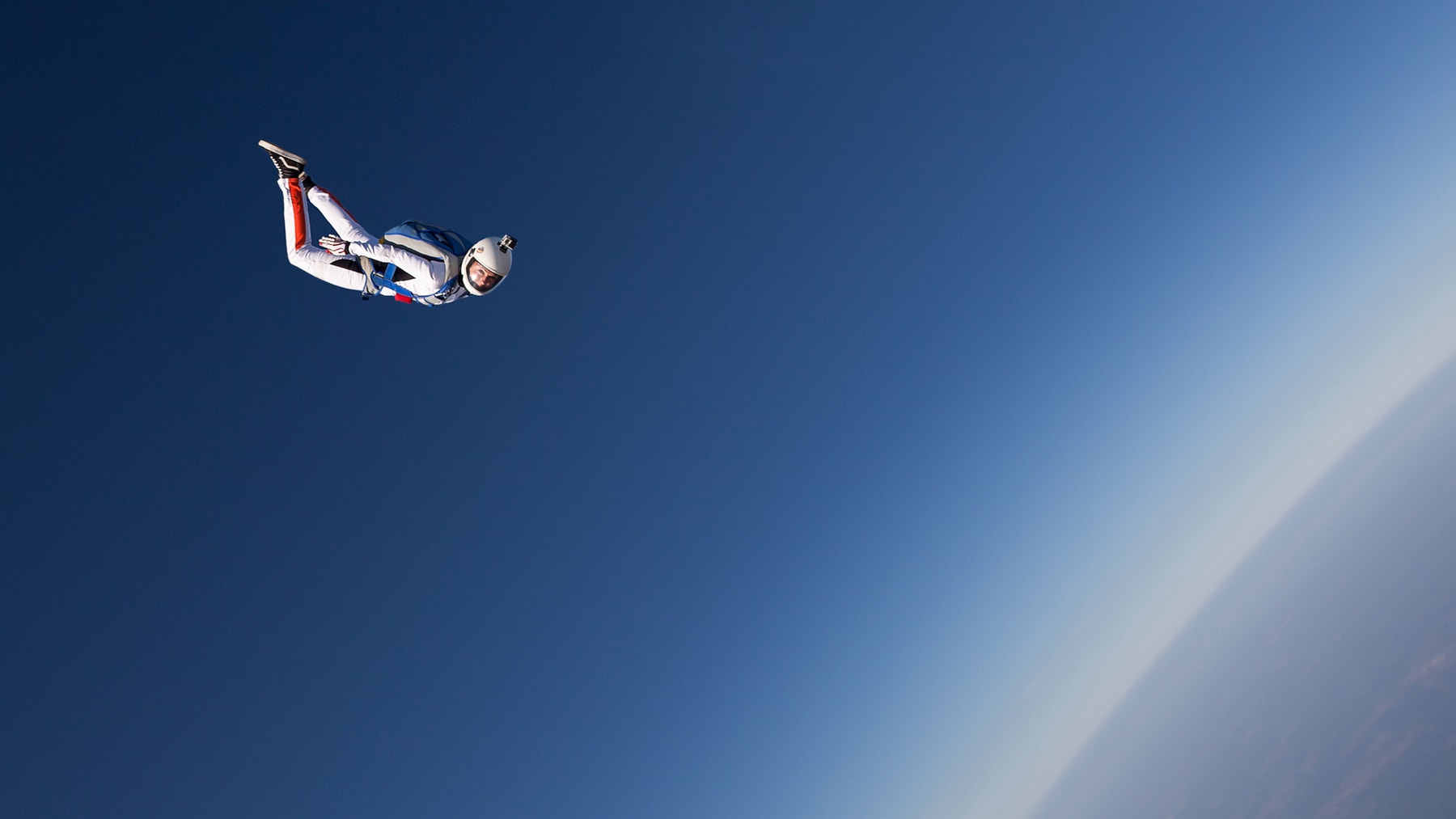Free Falling
Build a Drop Tower to experimentally determine the gravitational constant.

Lesson plan
1. Prepare
- Read through the pupil material in the EV3 Classroom App.
- Collect information about the law of falling bodies.
- If you don’t have double-block class time, plan to run this lesson over multiple class sessions.
Part A
2. Engage (10 Min.)
- Use the ideas in the ‘Ignite a Discussion’ section below to engage your pupils in a discussion relating to this lesson.
- Divide your class into teams of two pupils.
3. Explore (35 Min.)
- Have each team build the Drop Tower.
- Allow them time to do a test run to ensure that the model is built correctly and works as expected.
Part B
4. Explain (15 Min.)
- Have each team perform the experiment at least three times, and record their results.
- Make sure that they can create their own testing tables.
5. Elaborate (30 Min.)
- Have your pupils use their recorded data to calculate the average velocity and the gravitational constant using the law of falling bodies.
- Ask each team to briefly summarise the results of their experiments.
- Don’t forget to leave some time for tidying up.
6. Evaluate
- Give feedback on each pupil’s performance.
- To simplify the process, you can use the assessment rubrics that have been provided.
Ignite a Discussion
Free fall describes the acceleration of an object due exclusively to gravity. People who jump out of an aeroplane are slowed by aerodynamic resistance as they fall. A true free fall would only be possible in a vacuum in which no forces other than gravity can act. A test environment for experiments of this kind can be found at NASA’s Glenn Research Center in Cleveland, Ohio.

Start a discussion about free falling by asking relevant questions, like:
- What does the term free fall refer to?
- What’s the relation between acceleration and velocity?
- In a vacuum, does a hippopotamus fall at precisely the same rate as an earthworm?
- When can knowledge about the concept of free fall be useful?
Building Tips
Building Instructions
Using the Model
Place the model on a solid and level surface. Run the program and wait until the Touch Sensor is shown on the Display. Place the ball in the ball arm and press the Touch Sensor on the back of the Drop Tower to start a drop experiment. If the experiment is successful, a big smile followed by the fall time will be shown on the Display. If it is not successful, a sad face will be shown. The ball arm will close automatically for the next experiment.
Running the Experiment
As they’re running their experiments, remind your pupils of the following:
- If the experiment was successful, the fall time will be shown on the Display.
- Record the experiment number and fall time in a testing table. Make sure to leave enough space to add more columns for further calculations.
- Perform the experiment at least three times. Use the average value to ensure the most reliable results.
Coding Tips
Program

Differentiation
Simplify this lesson by:
- Helping your pupils to solve some of the calculations
Take this lesson to the next level by:
- Encouraging your pupils to perform additional calculations using the measured values
- Explaining the significance of average values (e.g. arithmetic mean versus the median, susceptibility to outliers) that can be used to equalise measurement errors across a series of experiments
- Challenging the pupils to come up with ways of improving the accuracy of their experiments
Assessment Opportunities
Teacher Observation Checklist
Establish a scale that suits your needs, for example:
- Partially accomplished
- Fully accomplished
- Overachieved
Use the following success criteria to evaluate your pupils’ progress:
- The pupils have applied mathematical concepts and/or processes in determining the gravitational constant.
- The pupils have explained that the ball accelerates at a constant rate.
- The pupils have identified the independent and controlled variables that were used in their experiments.
Self-Assessment
Have each pupil choose the level that they feel best represents their performance.
- Bronze: I’ve performed the experiments but haven’t calculated the average velocity or gravitational constant.
- Silver: With some help, I’ve calculated the average velocity and gravitational constant.
- Gold: I’ve calculated the average velocity and gravitational constant.
- Platinum: I’ve not only calculated the average velocity and gravitational constant, but I’ve also performed additional calculations using the measured values.

Language Arts Extension
To incorporate the development of language arts skills, have your pupils:
- Create a brief report focusing on the result of their experiment and how it compares with the accepted value for g, the acceleration of gravity near the surface of Earth
- Create a presentation explaining the results of their experiment and what they’ve learned
Note: This will require additional time.
Career Links
The pupils who enjoyed this lesson might be interested in exploring these career pathways:
- Manufacturing and Engineering (Pre-Engineering)
- Science, Technology, Engineering & Mathematics (Science and Maths)
Teacher Support
The pupils will:
- Learn to determine the gravitational constant
- Learn that there are laws of gravitation that apply to all objects
Science Programmes of Study: Key Stage 3 National Curriculum in England
Scientific Attitudes:
- Pay attention to objectivity and concern for accuracy, precision, repeatability and reproducibility
Experimental Skills and Investigations:
- Ask questions and develop a line of enquiry based on observations of the real world, alongside prior knowledge and experience
- Make predictions using scientific knowledge and understanding
- Make and record observations and measurements using a range of methods for different investigations; and evaluate the reliability of methods and suggest possible improvements
Analysis and Evaluation:
- Present observations and data using appropriate methods, including tables and graphs
- Interpret observations and data, including identifying patterns and using observations, measurements and data to draw conclusions
Forces and Motion:
- Forces being needed to cause objects to stop or start moving, or to change their speed or direction of motion (qualitative only)
- Change depending on direction of force and its size
Computing at School Progression Pathways
Programming & Development:
- Creates programs that implement algorithms to achieve given goals. (AL)
- Understands the difference between, and appropriately uses if and if, then and else statements. (AL)
- Uses a variable and relational operators within a loop to govern termination. (AL) (GE)
- Understands that programming bridges the gap between algorithmic solutions and computers. (AB)
Information Technology:
- Makes appropriate improvements to solutions based on feedback received, and can comment on the success of the solution. (EV)
- Uses criteria to evaluate the quality of solutions, can identify improvements making some refinements to the solution, and future solutions. (EV)
- Designs criteria to critically evaluate the quality of solutions, uses the criteria to identify improvements and can make appropriate refinements to the solution. (EV)




